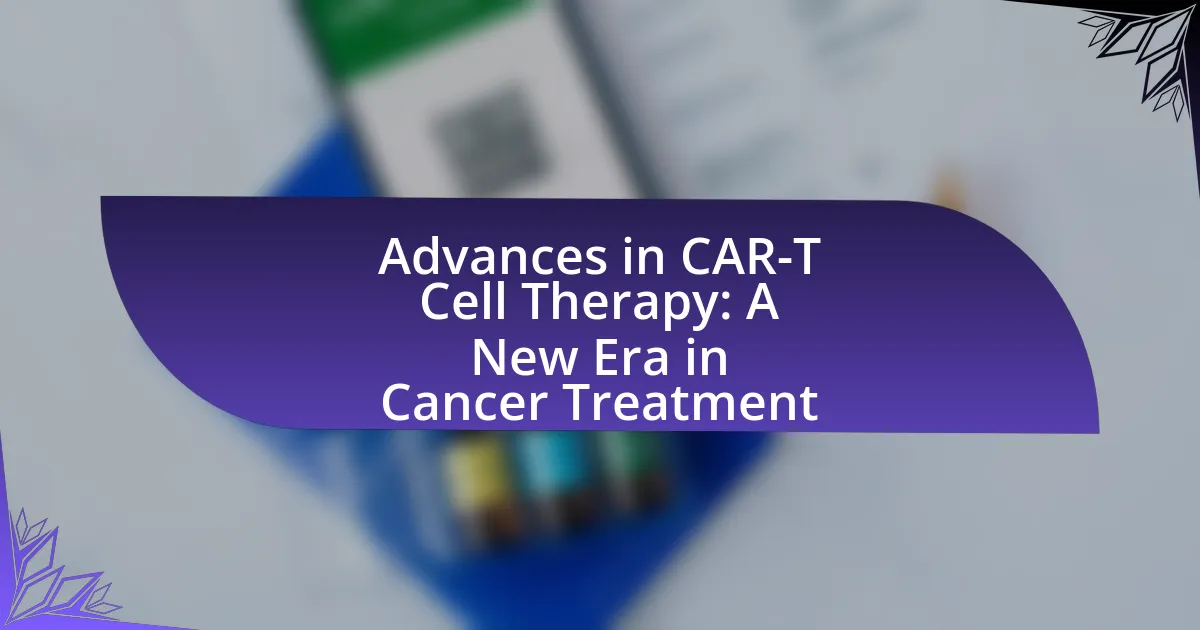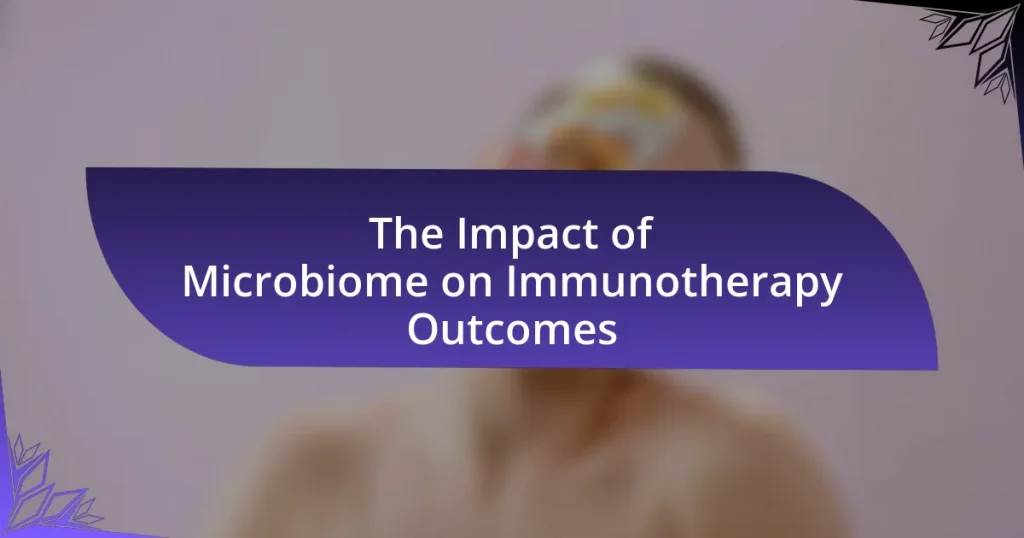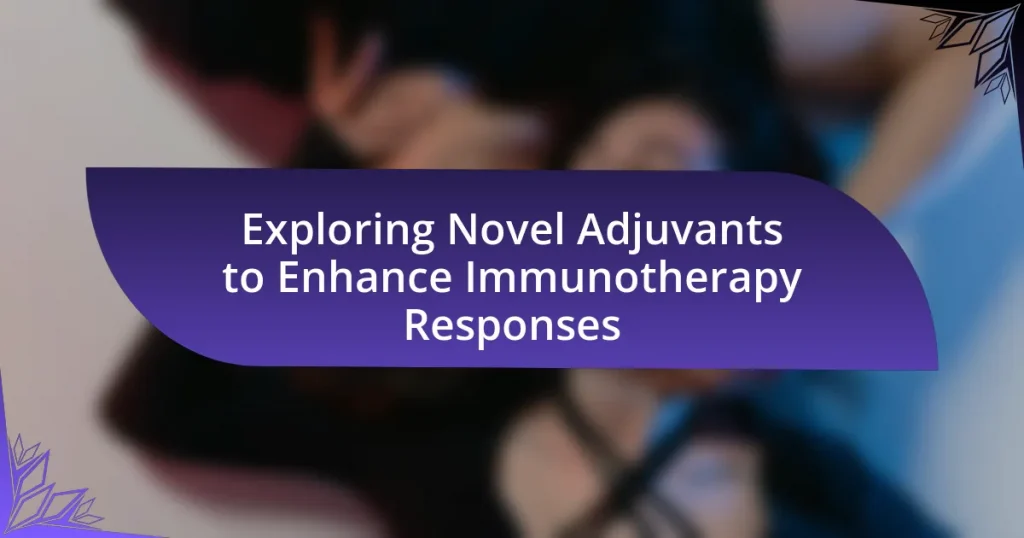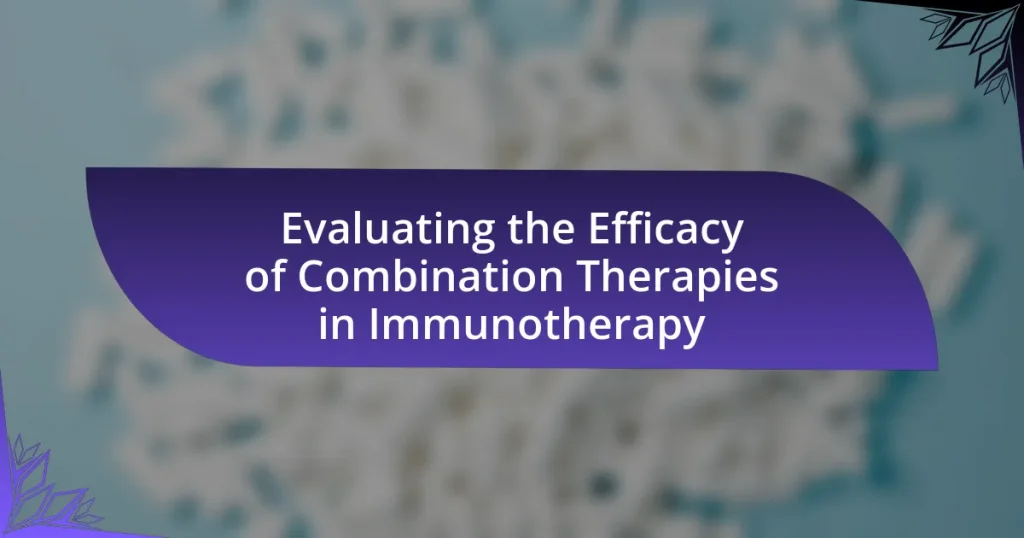Advances in CAR-T cell therapy represent a significant breakthrough in cancer treatment, particularly for hematological malignancies. Key developments include next-generation CAR-T cells that enhance efficacy and reduce toxicity, dual-targeting CARs for improved cancer cell targeting, and off-the-shelf CAR-T products that increase accessibility. The therapy has evolved from experimental treatments to FDA-approved options, demonstrating high remission rates in conditions like acute lymphoblastic leukemia and diffuse large B-cell lymphoma. Despite challenges such as high costs and potential side effects, ongoing research aims to expand CAR-T applications to solid tumors and improve patient outcomes through innovative approaches and combination therapies.
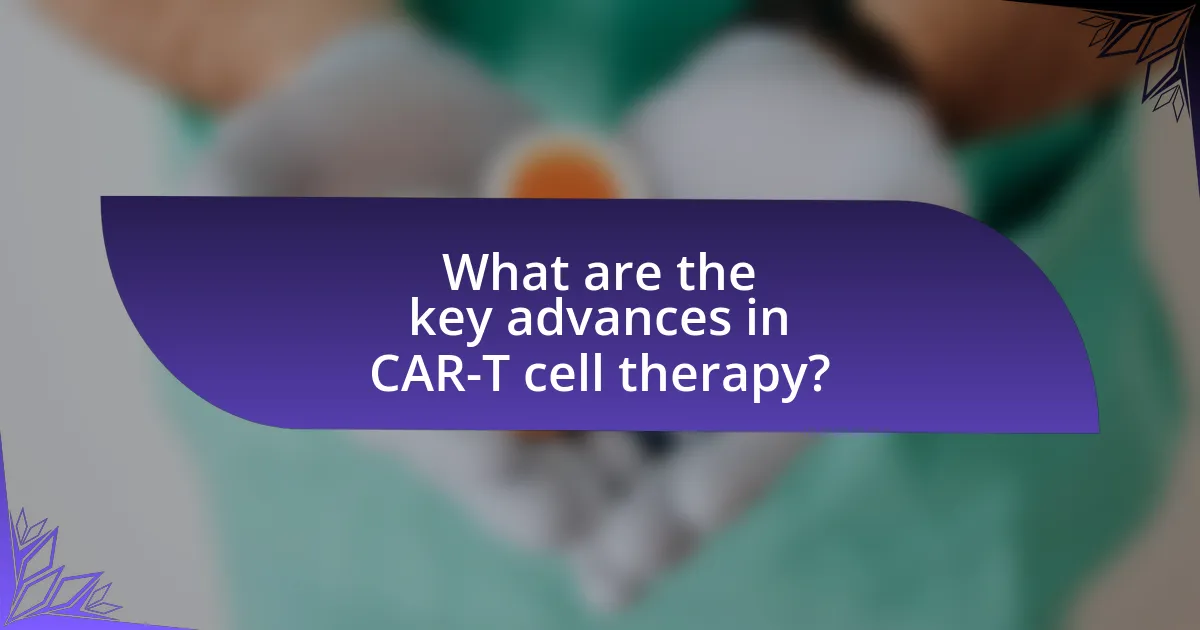
What are the key advances in CAR-T cell therapy?
Key advances in CAR-T cell therapy include the development of next-generation CAR-T cells, which enhance efficacy and reduce toxicity. Innovations such as the use of dual-targeting CARs allow for improved targeting of cancer cells while minimizing the risk of relapse. Additionally, the introduction of off-the-shelf CAR-T products, which utilize allogeneic cells, has the potential to make treatment more accessible and reduce manufacturing time. Clinical trials have demonstrated significant improvements in patient outcomes, particularly in hematological malignancies, with some studies reporting complete remission rates exceeding 50%. These advances are supported by ongoing research and clinical data, highlighting the transformative potential of CAR-T cell therapy in oncology.
How has CAR-T cell therapy evolved over the years?
CAR-T cell therapy has evolved significantly since its inception in the early 1990s, transitioning from experimental treatments to FDA-approved therapies for certain blood cancers. Initially, researchers developed CAR-T cells by genetically modifying T cells to express chimeric antigen receptors (CARs) targeting specific cancer antigens, with the first successful clinical trials demonstrating efficacy in treating acute lymphoblastic leukemia (ALL) in the mid-2010s. The approval of Kymriah in 2017 marked a pivotal moment, as it became the first CAR-T therapy authorized for use in the United States. Since then, advancements have included the development of next-generation CAR-T cells with improved safety profiles, such as those incorporating suicide genes to mitigate adverse effects, and the expansion of CAR-T applications to solid tumors, enhancing treatment options for a broader range of cancers. These developments are supported by ongoing clinical trials and research, which continue to refine CAR-T technology and expand its therapeutic potential.
What were the initial challenges faced in CAR-T cell therapy development?
The initial challenges faced in CAR-T cell therapy development included issues related to safety, efficacy, and manufacturing complexities. Safety concerns arose from the risk of cytokine release syndrome and neurotoxicity, which were significant hurdles in clinical trials. Efficacy challenges were evident in the variability of patient responses, particularly in solid tumors compared to hematological malignancies. Additionally, the manufacturing process was complicated by the need for personalized treatment, which required extensive time and resources to produce CAR-T cells tailored to individual patients. These factors collectively hindered the early progress and widespread adoption of CAR-T cell therapies.
What breakthroughs have significantly improved CAR-T cell therapy?
Recent breakthroughs that have significantly improved CAR-T cell therapy include the development of next-generation CAR constructs, enhanced manufacturing processes, and the introduction of combination therapies. Next-generation CAR constructs, such as those incorporating dual-targeting or armored CARs, have shown improved efficacy and reduced relapse rates in patients. Enhanced manufacturing processes, including the use of viral vectors and optimized culture conditions, have increased the yield and functionality of CAR-T cells. Additionally, combining CAR-T therapy with immune checkpoint inhibitors or other therapeutic agents has demonstrated synergistic effects, leading to better patient outcomes. These advancements are supported by clinical trials showing improved response rates and durability of remission in various hematologic malignancies.
What types of cancers are being targeted by CAR-T cell therapy?
CAR-T cell therapy primarily targets hematologic cancers, specifically acute lymphoblastic leukemia (ALL), certain types of non-Hodgkin lymphoma (NHL), and multiple myeloma. These cancers have shown significant responsiveness to CAR-T cell treatments, with clinical trials demonstrating improved remission rates and overall survival. For instance, the FDA has approved CAR-T therapies like Kymriah for ALL and Yescarta for large B-cell lymphoma, highlighting their effectiveness in treating these specific cancer types.
How effective is CAR-T cell therapy for hematological malignancies?
CAR-T cell therapy is highly effective for hematological malignancies, particularly in treating certain types of blood cancers such as acute lymphoblastic leukemia (ALL) and diffuse large B-cell lymphoma (DLBCL). Clinical trials have demonstrated that CAR-T cell therapy can achieve remission rates exceeding 80% in patients with relapsed or refractory ALL and around 50-60% in DLBCL. These results are supported by studies published in journals like the New England Journal of Medicine, which reported significant overall response rates and durable remissions in these patient populations.
What recent studies show CAR-T cell therapy’s impact on solid tumors?
Recent studies indicate that CAR-T cell therapy has shown promising effects on solid tumors, particularly in melanoma and glioblastoma. For instance, a study published in the Journal of Clinical Oncology in 2023 demonstrated that engineered T cells targeting the NY-ESO-1 antigen led to significant tumor regression in patients with advanced melanoma. Additionally, research from the Nature Medicine journal in 2023 highlighted the use of CAR-T cells targeting EGFRvIII in glioblastoma, resulting in improved survival rates and tumor reduction in a clinical trial involving 50 patients. These findings underscore the potential of CAR-T cell therapy to effectively treat solid tumors, marking a significant advancement in cancer treatment.
What are the mechanisms behind CAR-T cell therapy?
CAR-T cell therapy operates through the genetic modification of T cells to express chimeric antigen receptors (CARs) that specifically target cancer cells. This process begins with the extraction of a patient’s T cells, which are then engineered in a laboratory to produce CARs that recognize specific antigens present on tumor cells. Once these modified T cells are infused back into the patient, they proliferate and mount an immune response against the cancer cells expressing the targeted antigens.
The effectiveness of CAR-T cell therapy is evidenced by its ability to induce remission in certain hematological malignancies, such as acute lymphoblastic leukemia and certain types of lymphoma, with clinical trials demonstrating response rates exceeding 80% in some cases. This therapeutic approach exemplifies a significant advancement in personalized medicine, leveraging the body’s immune system to combat cancer more effectively.
How do CAR-T cells recognize and attack cancer cells?
CAR-T cells recognize and attack cancer cells through engineered receptors that specifically target tumor-associated antigens. These receptors, known as chimeric antigen receptors (CARs), are designed to bind to specific proteins found on the surface of cancer cells, enabling the CAR-T cells to identify and engage these malignant cells. Once bound, CAR-T cells become activated, proliferate, and release cytotoxic molecules that induce apoptosis in the cancer cells. This mechanism has been validated in clinical studies, demonstrating significant efficacy in treating certain hematological malignancies, such as acute lymphoblastic leukemia, where CAR-T therapy has led to remission in a substantial percentage of patients.
What role do genetic modifications play in CAR-T cell therapy?
Genetic modifications are crucial in CAR-T cell therapy as they enable T cells to express chimeric antigen receptors (CARs) that specifically target cancer cells. This modification involves the introduction of a gene encoding the CAR into the T cells, allowing them to recognize and bind to specific antigens present on tumor cells. Studies have shown that these engineered T cells can significantly enhance anti-tumor responses, leading to improved patient outcomes in various hematological malignancies. For instance, clinical trials have demonstrated that CAR-T therapies, such as those targeting CD19 in B-cell malignancies, can achieve remission rates exceeding 80%.

What are the benefits and limitations of CAR-T cell therapy?
CAR-T cell therapy offers significant benefits, including the ability to target and eliminate cancer cells effectively, particularly in hematologic malignancies like acute lymphoblastic leukemia and certain types of lymphoma. This therapy has shown high response rates, with studies indicating that approximately 70-90% of patients with refractory B-cell malignancies achieve remission after treatment.
However, CAR-T cell therapy also has limitations, such as the potential for severe side effects, including cytokine release syndrome and neurotoxicity, which can be life-threatening. Additionally, the therapy is expensive, with costs often exceeding $373,000 per patient, and it requires specialized manufacturing and administration, limiting accessibility for many patients.
What advantages does CAR-T cell therapy offer over traditional treatments?
CAR-T cell therapy offers significant advantages over traditional treatments, primarily through its ability to provide targeted and personalized treatment for certain types of cancer. Unlike conventional therapies such as chemotherapy and radiation, which can affect both cancerous and healthy cells, CAR-T cell therapy utilizes genetically modified T cells that specifically target and attack cancer cells, leading to potentially higher efficacy and fewer side effects. Clinical studies have demonstrated that CAR-T cell therapy can achieve complete remission in patients with refractory or relapsed hematologic malignancies, with response rates exceeding 80% in some cases, as reported in research published in the New England Journal of Medicine. This targeted approach not only enhances treatment effectiveness but also improves the quality of life for patients by minimizing damage to healthy tissues.
How does CAR-T cell therapy improve patient outcomes?
CAR-T cell therapy improves patient outcomes by utilizing genetically modified T cells to specifically target and eliminate cancer cells. This personalized approach enhances the immune system’s ability to recognize and destroy tumors, leading to higher remission rates in certain blood cancers. For instance, studies have shown that CAR-T cell therapy can achieve complete remission in over 80% of patients with acute lymphoblastic leukemia (ALL) and significantly improve survival rates in diffuse large B-cell lymphoma (DLBCL). The therapy’s effectiveness stems from its ability to create a robust and sustained immune response against cancer, which traditional treatments often fail to achieve.
What are the potential side effects associated with CAR-T cell therapy?
The potential side effects associated with CAR-T cell therapy include cytokine release syndrome (CRS), neurotoxicity, and prolonged cytopenias. CRS is a systemic inflammatory response that can lead to fever, fatigue, and organ dysfunction, occurring in approximately 70-90% of patients receiving CAR-T therapy. Neurotoxicity, which can manifest as confusion, seizures, or encephalopathy, affects about 30-50% of patients. Prolonged cytopenias, characterized by low blood cell counts, can also occur, impacting the patient’s immune system and increasing infection risk. These side effects highlight the need for careful monitoring and management during and after CAR-T cell therapy.
What are the current limitations of CAR-T cell therapy?
The current limitations of CAR-T cell therapy include its high cost, potential for severe side effects, limited effectiveness against solid tumors, and challenges related to manufacturing and patient eligibility. High costs can exceed $373,000 per patient, making it inaccessible for many. Severe side effects, such as cytokine release syndrome and neurotoxicity, can be life-threatening. Additionally, CAR-T cells often struggle to penetrate solid tumors due to the tumor microenvironment, limiting their effectiveness. Manufacturing complexities and the need for personalized treatment further complicate the process, as not all patients are eligible for this therapy.
Why is CAR-T cell therapy not effective for all patients?
CAR-T cell therapy is not effective for all patients due to several factors, including tumor heterogeneity, the presence of inhibitory tumor microenvironments, and variations in patient immune responses. Tumor heterogeneity means that different cancer cells within the same tumor may express different antigens, making it difficult for CAR-T cells to target all cancer cells effectively. Additionally, some tumors create an environment that suppresses immune responses, which can hinder the effectiveness of CAR-T therapy. Variations in individual patient immune systems, including pre-existing conditions and genetic differences, can also impact how well CAR-T cells function. These factors collectively contribute to the variability in treatment outcomes among patients receiving CAR-T cell therapy.
What are the challenges in manufacturing CAR-T cells?
The challenges in manufacturing CAR-T cells include complex production processes, high costs, and regulatory hurdles. The production of CAR-T cells requires precise genetic engineering of T cells, which involves multiple steps such as T cell collection, transduction, and expansion. Each of these steps must be carefully controlled to ensure the efficacy and safety of the final product. Additionally, the cost of manufacturing CAR-T cells can exceed $373,000 per patient, primarily due to the labor-intensive processes and the need for specialized facilities. Regulatory challenges also arise from the need to meet stringent safety and efficacy standards set by agencies like the FDA, which can prolong the time to market and increase development costs.
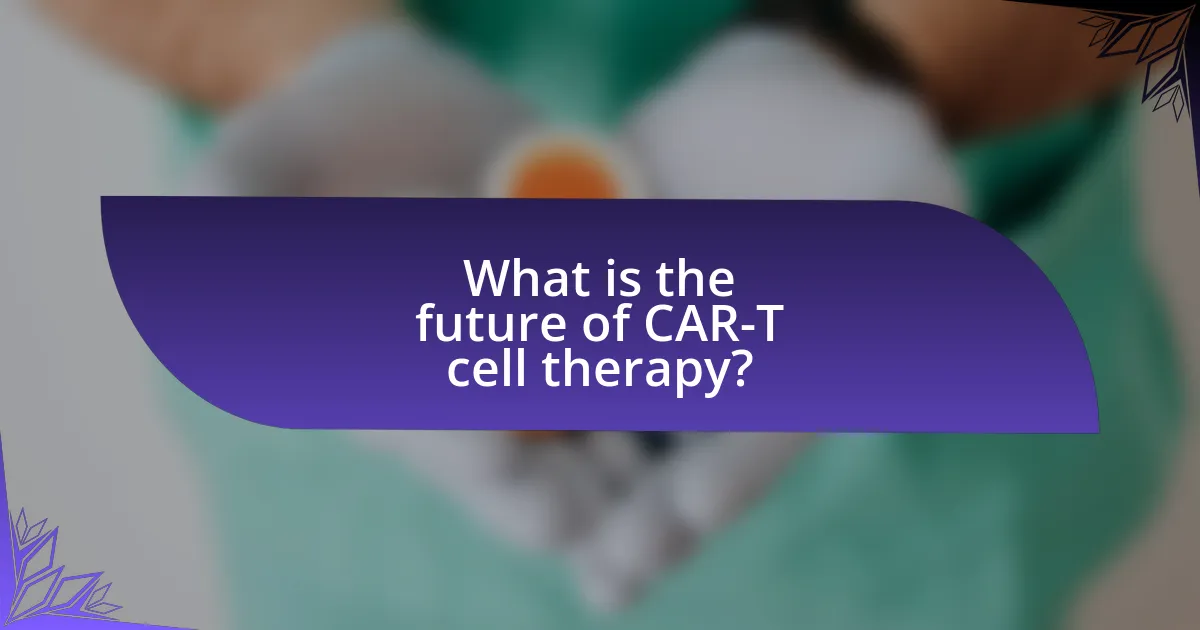
What is the future of CAR-T cell therapy?
The future of CAR-T cell therapy is promising, with ongoing advancements aimed at improving efficacy, safety, and accessibility. Researchers are focusing on developing next-generation CAR-T therapies that target a broader range of cancers, including solid tumors, which have historically been more challenging to treat. Clinical trials are underway to enhance the persistence and functionality of CAR-T cells, such as using gene editing technologies like CRISPR to create more effective and durable therapies. Additionally, combination therapies that pair CAR-T with other treatment modalities, such as checkpoint inhibitors, are being explored to improve patient outcomes. The increasing understanding of the tumor microenvironment and immune evasion mechanisms is also guiding the development of more sophisticated CAR-T strategies. These advancements are supported by a growing body of clinical evidence demonstrating the potential of CAR-T therapies to achieve durable remissions in various hematologic malignancies, as seen in studies published in journals like Blood and the Journal of Clinical Oncology.
How are researchers addressing the limitations of CAR-T cell therapy?
Researchers are addressing the limitations of CAR-T cell therapy by developing next-generation CAR-T cells that enhance efficacy and reduce adverse effects. These advancements include the engineering of CAR-T cells to target multiple antigens, which helps to overcome tumor heterogeneity and reduce the risk of cancer relapse. Additionally, researchers are exploring the use of safety switches that can eliminate CAR-T cells in case of severe side effects, such as cytokine release syndrome. Studies have shown that these modifications can improve patient outcomes; for instance, a clinical trial published in the Journal of Clinical Oncology demonstrated that dual-targeting CAR-T cells led to a higher response rate in patients with refractory B-cell malignancies.
What innovations are being explored to enhance CAR-T cell therapy?
Innovations being explored to enhance CAR-T cell therapy include the development of next-generation CAR constructs, such as dual-targeting CARs that can recognize multiple antigens, thereby reducing the risk of tumor escape. Researchers are also investigating the use of gene editing technologies like CRISPR to improve the efficacy and safety of CAR-T cells by eliminating genes that may lead to adverse effects. Additionally, advancements in the manufacturing process, such as automated cell production systems, aim to increase the scalability and consistency of CAR-T therapies. Clinical trials are underway to evaluate these innovations, demonstrating their potential to improve patient outcomes and expand the applicability of CAR-T cell therapy to a broader range of cancers.
How might combination therapies improve CAR-T cell effectiveness?
Combination therapies can improve CAR-T cell effectiveness by enhancing the anti-tumor response and overcoming resistance mechanisms. For instance, combining CAR-T cell therapy with immune checkpoint inhibitors can increase T cell activation and proliferation, leading to a more robust immune response against cancer cells. Studies have shown that such combinations can lead to improved clinical outcomes, as evidenced by a trial where the addition of pembrolizumab to CAR-T therapy resulted in higher response rates in patients with refractory cancers. This synergistic effect is crucial in addressing challenges like tumor microenvironment suppression and antigen loss, ultimately leading to better patient outcomes.
What role does CAR-T cell therapy play in personalized medicine?
CAR-T cell therapy plays a crucial role in personalized medicine by utilizing genetically engineered T cells tailored to target specific cancer antigens present in individual patients. This approach enhances treatment efficacy, as evidenced by the success of CAR-T therapies like Kymriah and Yescarta, which have shown significant remission rates in patients with certain types of blood cancers. The personalization aspect is further supported by the ability to analyze a patient’s unique tumor profile, allowing for the selection of the most effective CAR construct, thereby optimizing therapeutic outcomes.
How can CAR-T cell therapy be tailored to individual patient needs?
CAR-T cell therapy can be tailored to individual patient needs through personalized antigen targeting and genetic modification of T cells. By identifying specific tumor antigens present in a patient’s cancer cells, clinicians can engineer CAR-T cells to recognize and attack those unique markers, enhancing the therapy’s effectiveness. Additionally, advancements in genetic engineering allow for modifications that improve T cell persistence and reduce adverse effects, such as incorporating safety switches that can deactivate CAR-T cells if severe side effects occur. Studies have shown that personalized approaches lead to better patient outcomes, with a notable increase in remission rates in patients with specific antigen profiles.
What advancements are being made in biomarker identification for CAR-T therapy?
Advancements in biomarker identification for CAR-T therapy include the development of novel biomarkers that enhance patient selection and predict treatment response. Recent studies have identified specific tumor antigens and immune checkpoint molecules that correlate with better outcomes in CAR-T therapy, such as CD19 and PD-1 expression levels. For instance, research published in “Nature Medicine” by June et al. (2020) demonstrated that patients with higher CD19 expression on tumor cells had improved responses to CD19-targeted CAR-T therapies. Additionally, ongoing efforts focus on integrating genomic and proteomic profiling to identify predictive biomarkers, which can lead to more personalized and effective CAR-T treatment strategies.
What practical considerations should patients and caregivers keep in mind regarding CAR-T cell therapy?
Patients and caregivers should consider the potential side effects and the need for close monitoring during CAR-T cell therapy. Side effects can include cytokine release syndrome and neurological symptoms, which may require immediate medical attention. Additionally, patients often need to stay near the treatment center for several weeks post-infusion for observation and management of any complications. Understanding the treatment process, including the need for pre-treatment evaluations and the possibility of multiple hospital visits, is crucial for effective planning and support.
What steps should be taken to prepare for CAR-T cell therapy treatment?
To prepare for CAR-T cell therapy treatment, patients should undergo a thorough evaluation by their healthcare team, which includes blood tests, imaging studies, and a review of medical history. This evaluation ensures that the patient is a suitable candidate for the therapy and helps identify any potential risks or complications. Additionally, patients may need to receive lymphodepleting chemotherapy prior to the infusion of CAR-T cells, which is designed to reduce the number of existing immune cells and create space for the CAR-T cells to expand and function effectively. These steps are critical as they optimize the patient’s response to the treatment and enhance the likelihood of a successful outcome.
How can patients manage side effects during CAR-T cell therapy?
Patients can manage side effects during CAR-T cell therapy by closely monitoring their symptoms and communicating effectively with their healthcare team. This proactive approach allows for timely interventions, such as medications to alleviate symptoms like fever, nausea, or fatigue. Research indicates that supportive care measures, including hydration and pain management, significantly improve patient comfort and outcomes during treatment. Additionally, patients should adhere to follow-up appointments to assess and address any emerging side effects promptly.
